Made to Play: A Retrospective of Wood by Pamela Weir-Quiton
With more than fifty years of woodworking under her tool belt, Craft in America Center is pleased to present a retrospective of functional wood sculpture by artist Pamela Weir-Quiton, a bonafide Los Angeles treasure whose work defies categorization. The exhibition will feature approximately forty objects that reflect Weir-Quiton’s decades-long consideration of the concept of play, from stylized dolls to large scale circus animals for climbing and adult-sized animal rockers.
As a young art student at CSUN with a knack for fashion design, Weir-Quiton initially explored ceramics and photography but was soon drawn into the woodshop, where she immediately found her calling. Rather than sticking with the pack of her predominantly male classmates, Weir-Quiton decided to use laminated hardwoods to make her own mark by creating a dapper wooden Mod girl doll ala Mary Quant for her class project. Weir-Quiton immediately received media attention for her singular vision, virtuosity, and creative spirit as a student in 1965 and various commissions followed in suit. She was swooped up and featured in catalogs, lifestyle magazines and leading newspaper spreads for her sculptures. This began a lifelong pursuit of bringing fun, imagination and biting humor into her work, which has always been intended for the chicest kids of all ages, namely, grown-ups.
Weir-Quiton’s novel, fresh approach to woodwork was influenced by her original interests in sewing and patternmaking, high contrast photography, and prehistoric and Indigenous statuary. She has created a compelling body of work that floats between design and sculpture, in the same vein as the Eames molded plywood elephant and the laminated sculptural furniture of Wendell Castell. Her bent, however, is a decidedly feminist take on figurative art that is indicative of a revolutionary era in women’s history.
Over the years, Weir-Quiton has designed and created sculptures and window displays for the finest department stores across the U.S., including Bergdorf’s in NYC and Neiman Marcus in Los Angeles. She built nearly life-size tigers and other animals for childrens’ play zones across Southern California, many of which imprinted on a generation that now has children of its own. Weir-Quiton brings blocks of wood to life through a bold yet neutral palette of puzzled together, contrasted wood grain.
Weir-Quiton’s modernist and geometric take on three-dimensional design is very much in the vein of mid-century graphic design, calling to mind the stylized animals of Charley Harper and the compositions of Italian post-WWII legends Bruno Munari and Franco Grignani. Her objects are paired-down, essential forms in which details are collapsed as surface lines and patterns. Her sleek, smooth treatment of wood makes for durable, yet whimsical sculptures that speak to the inner child in all of us, reminding everyone to let go, find bliss in beauty, and hopefully, take life a bit less seriously.
“Life is a playground.”
-Pamela Weir-Quiton
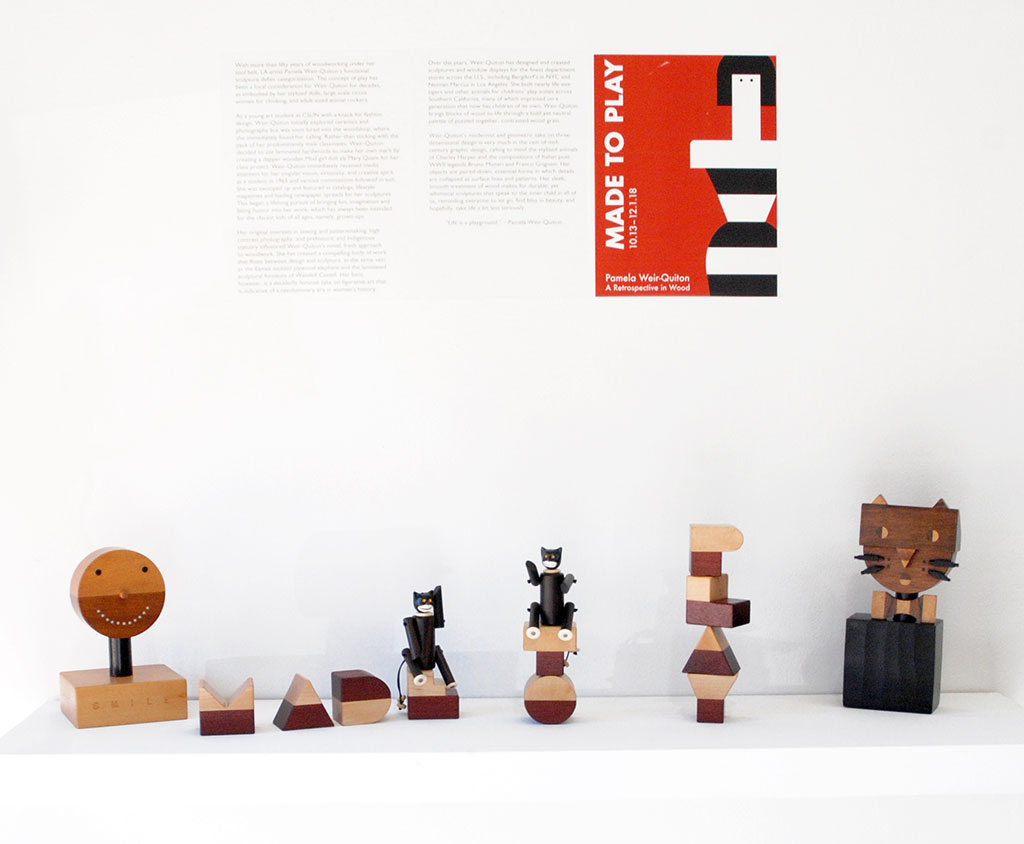
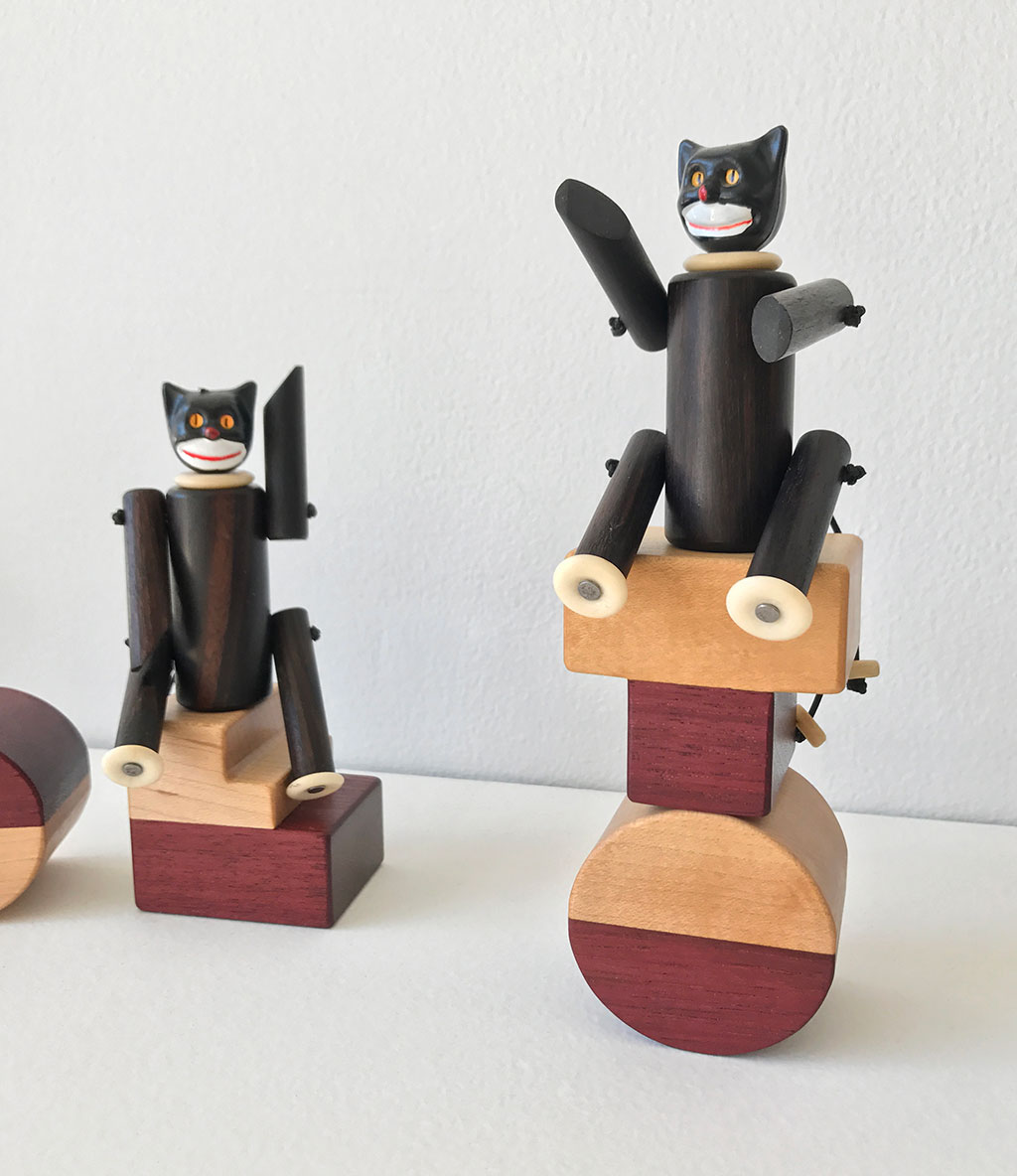
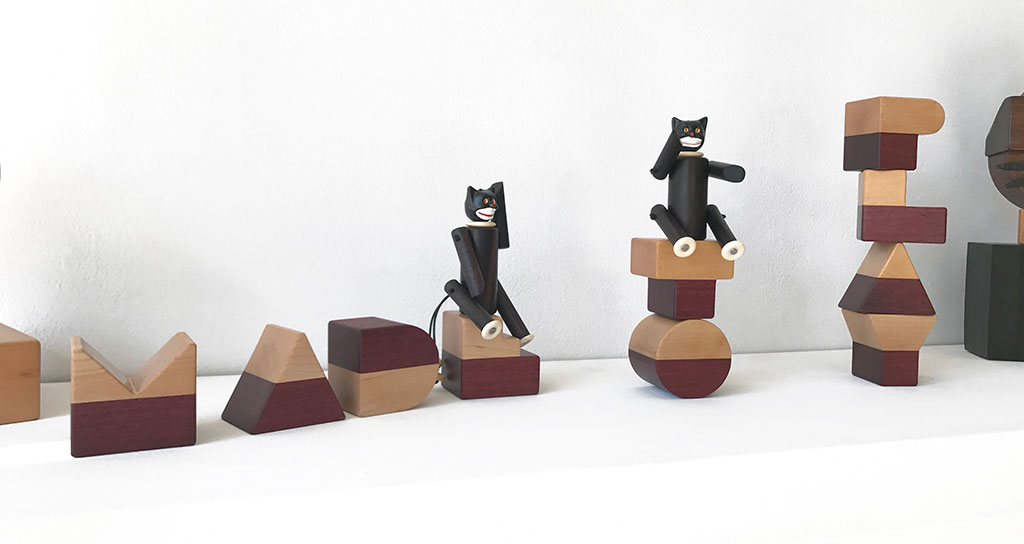
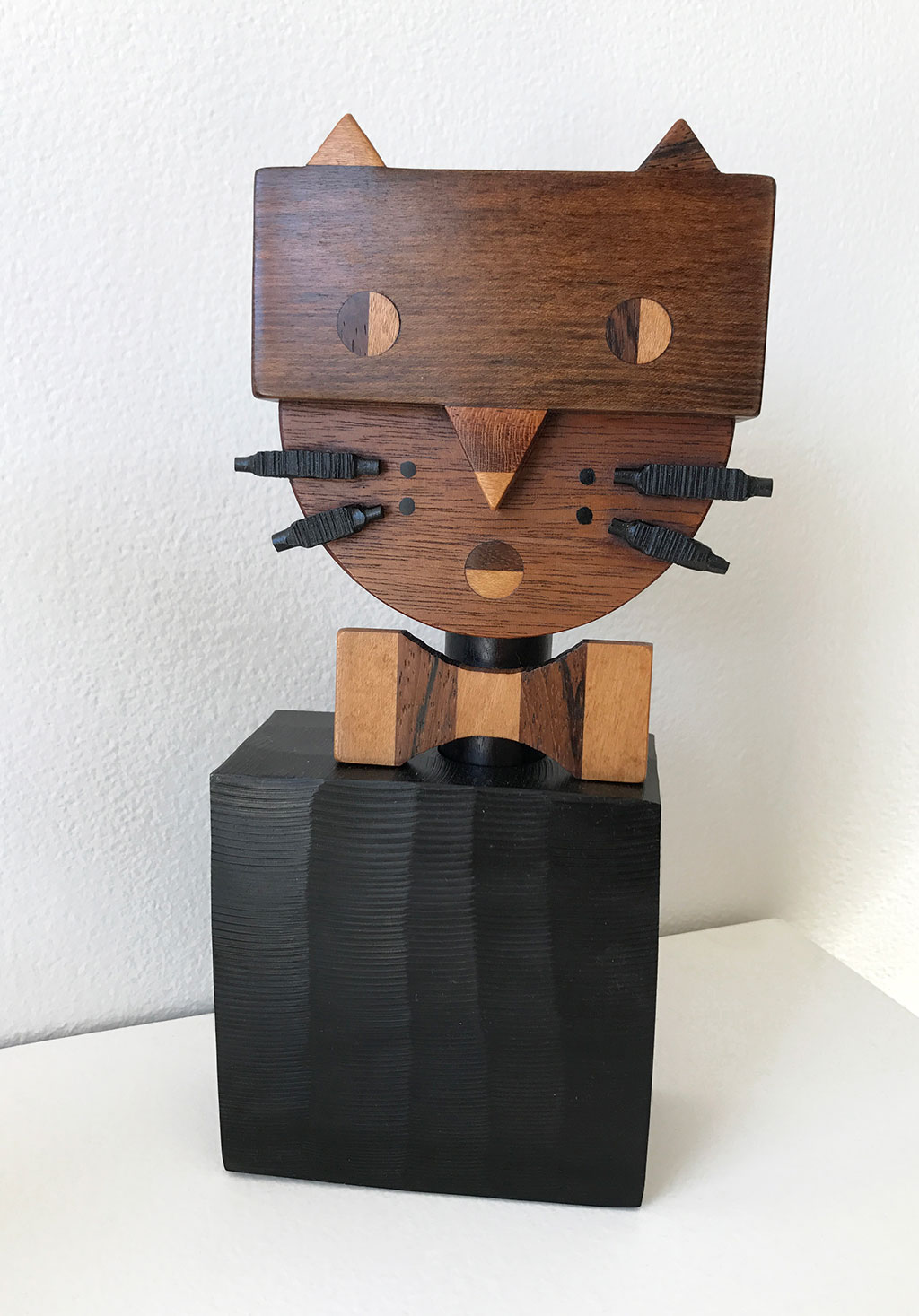
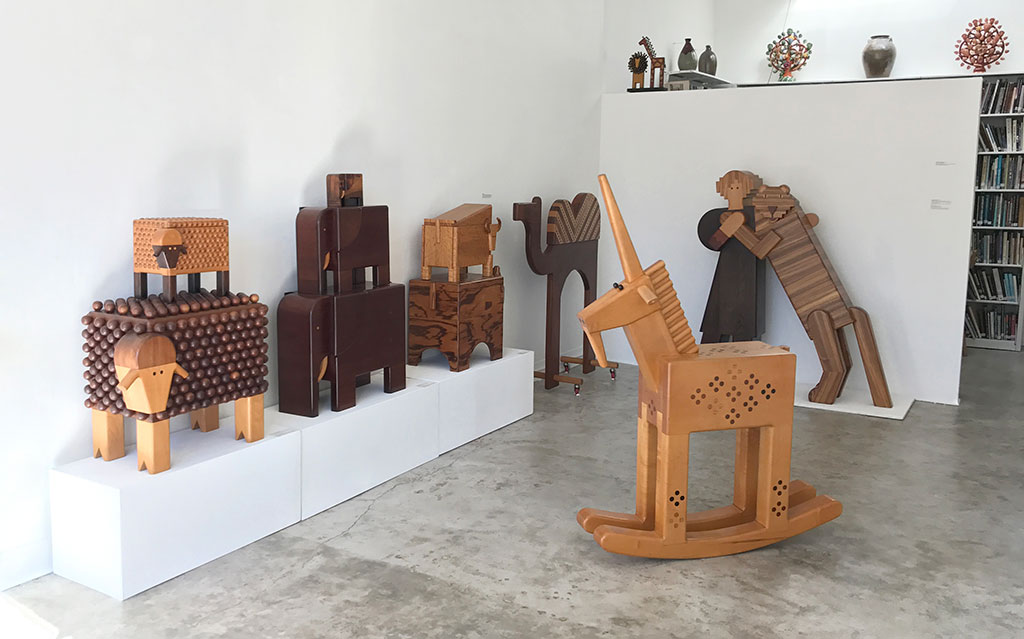
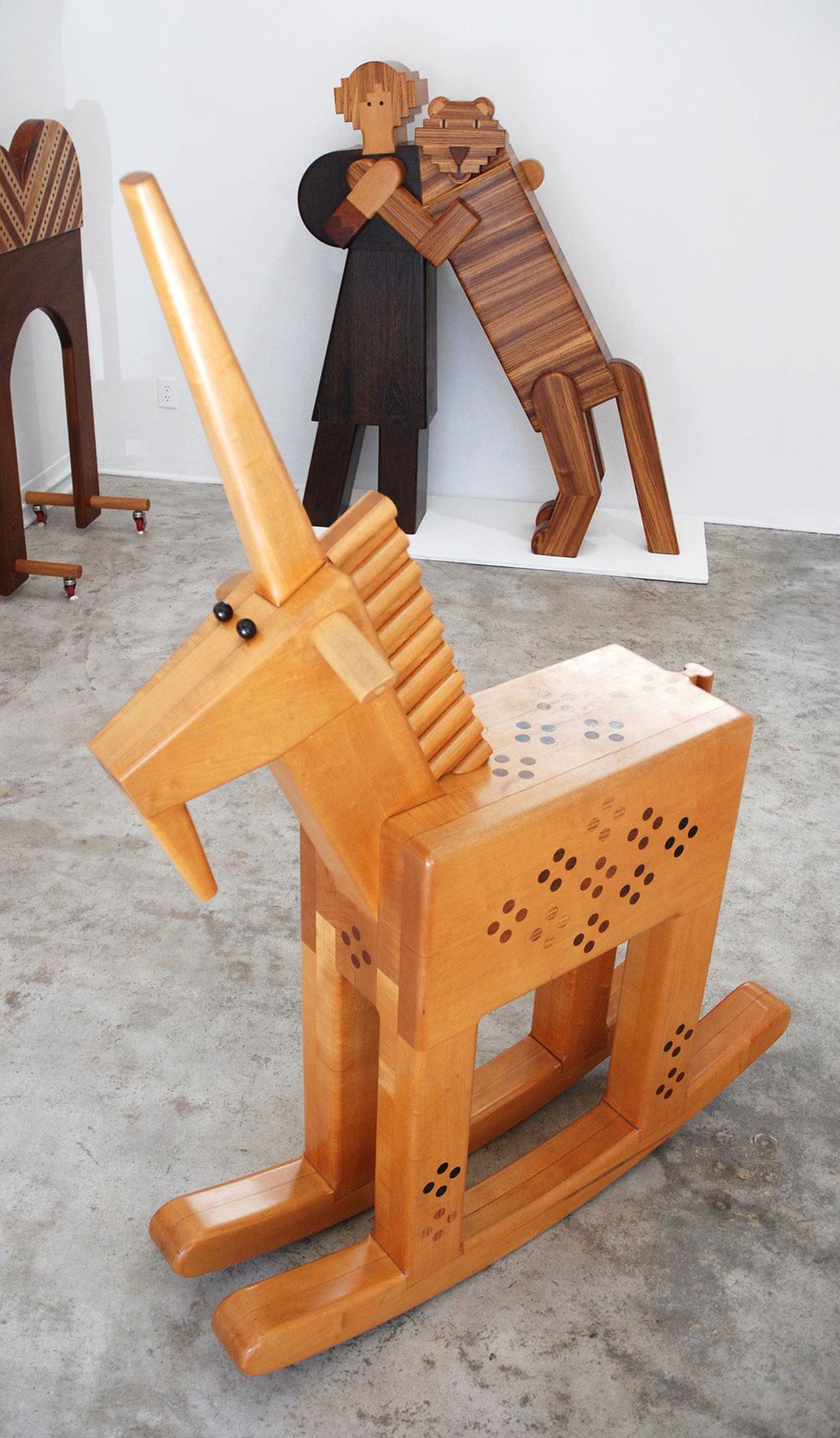
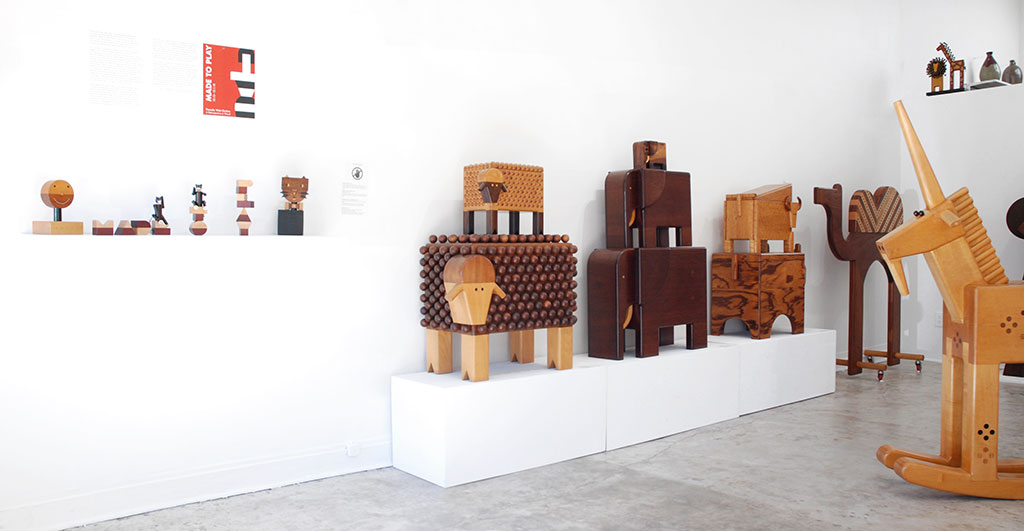
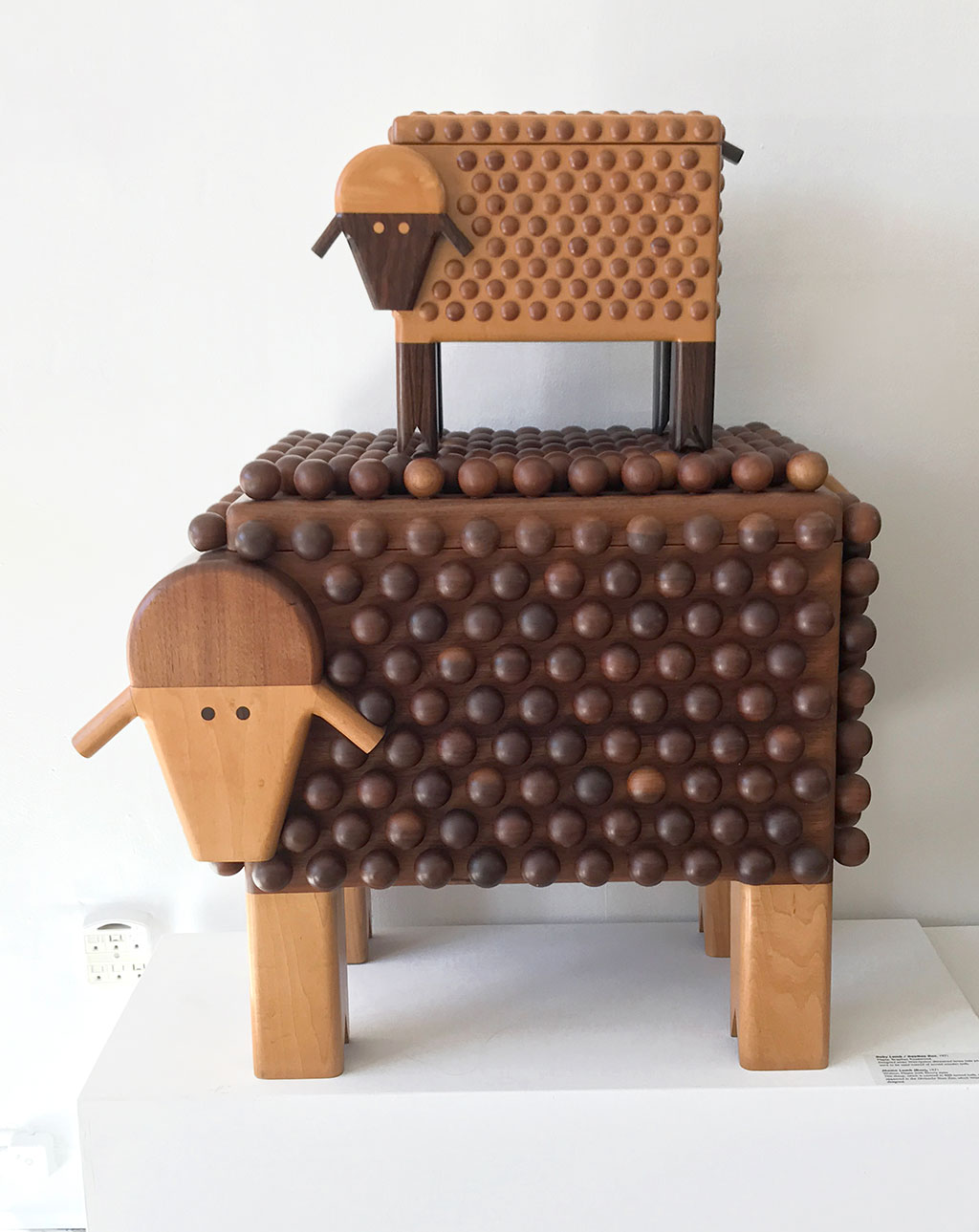
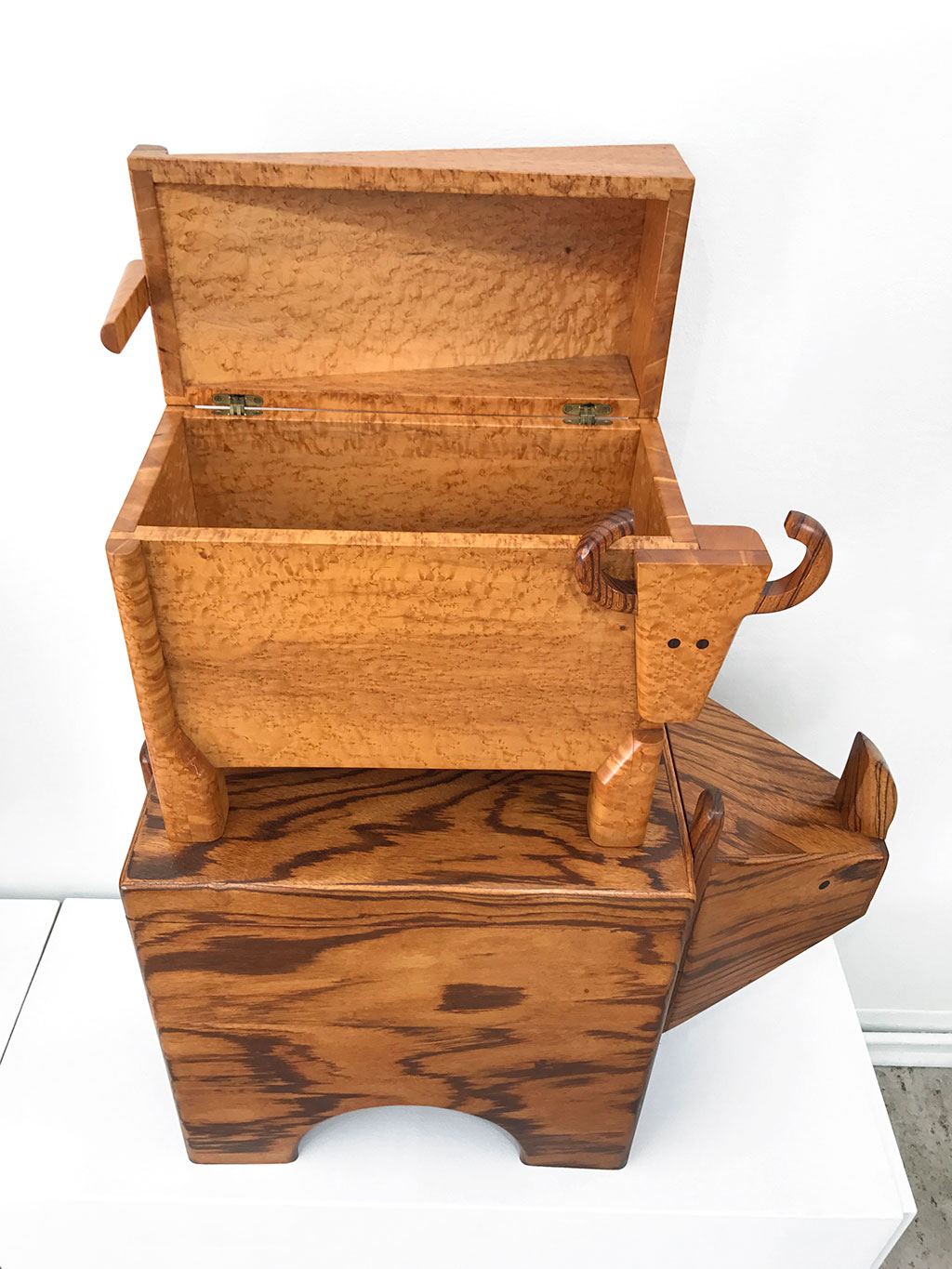
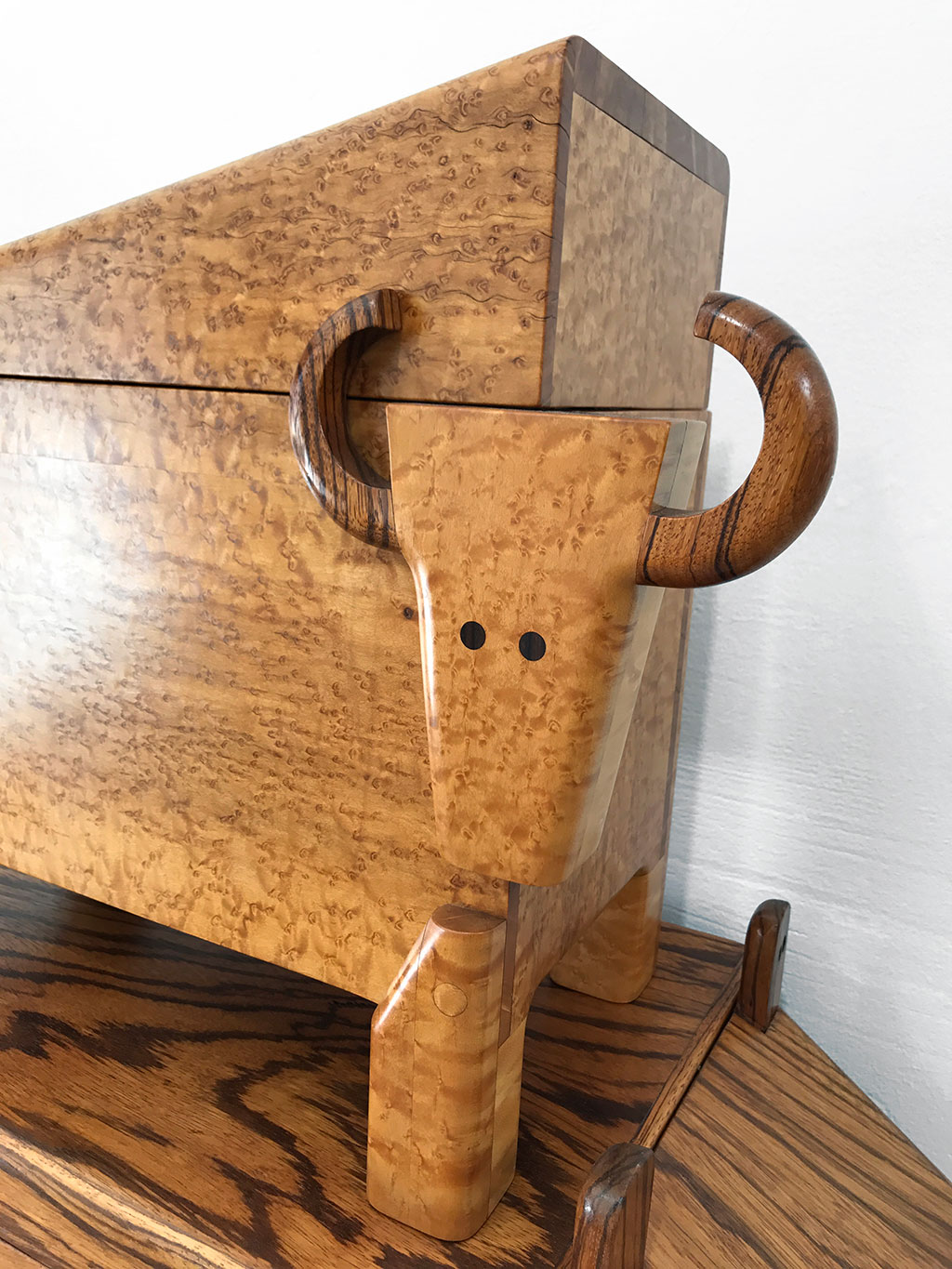
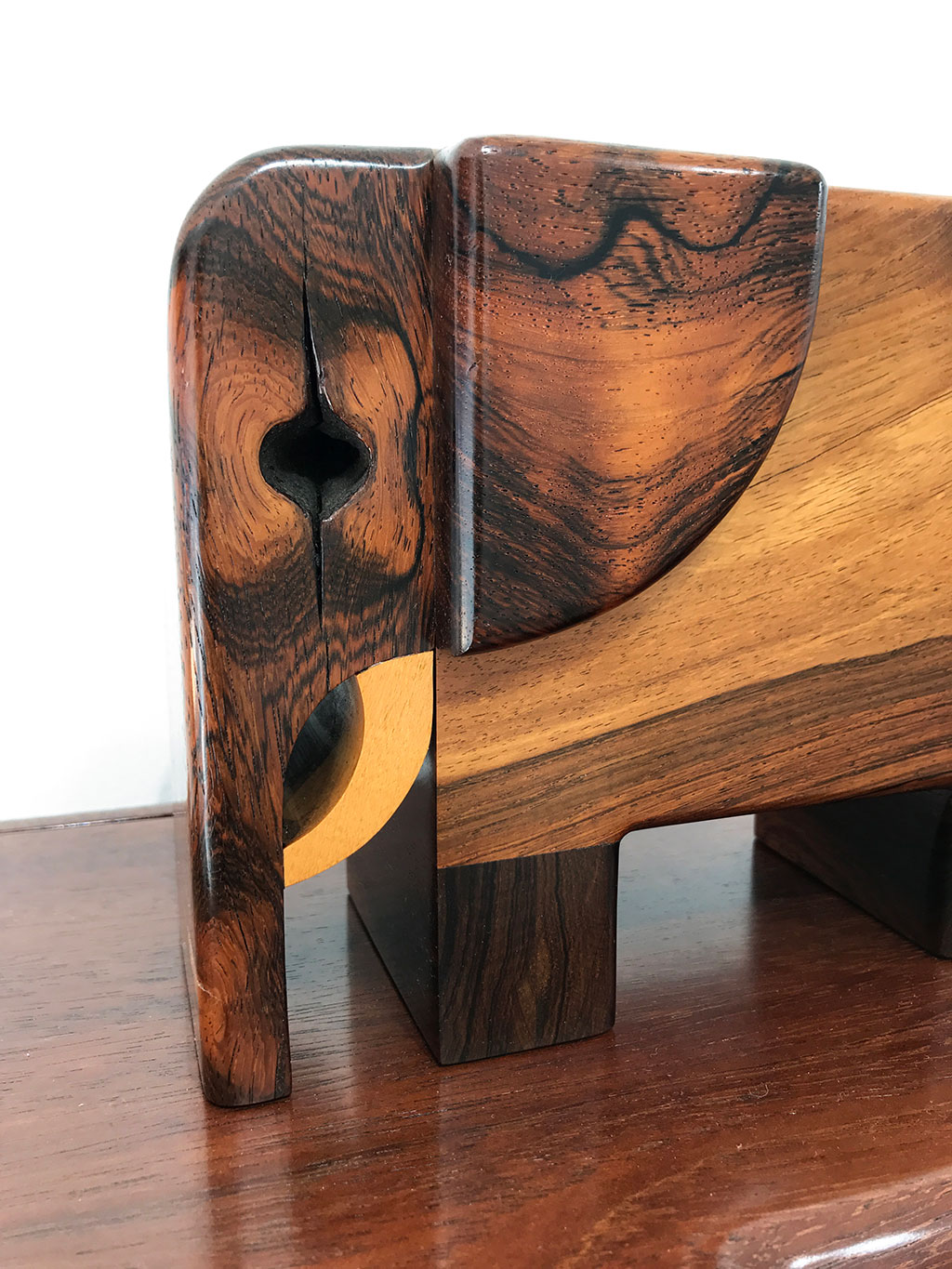
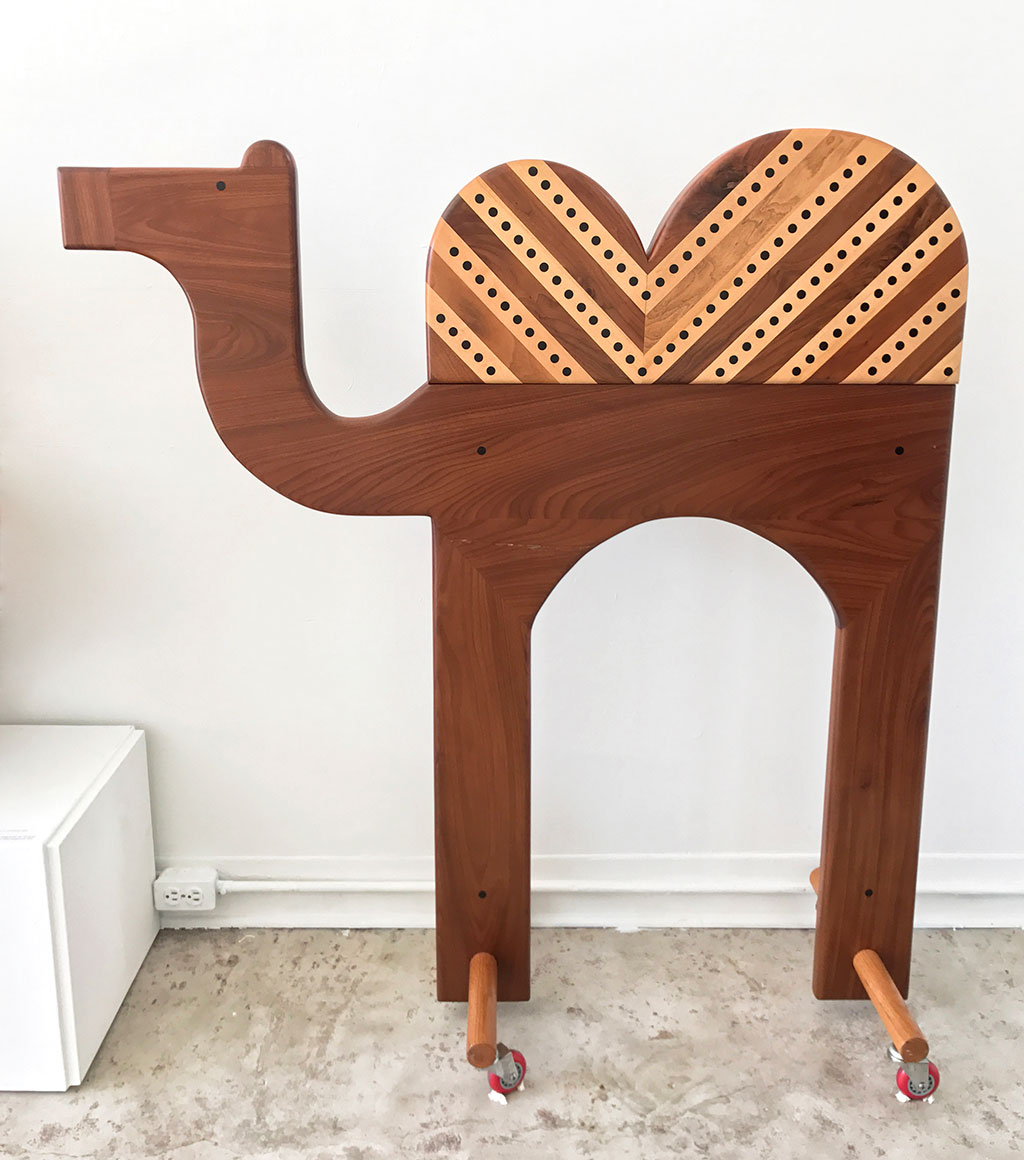
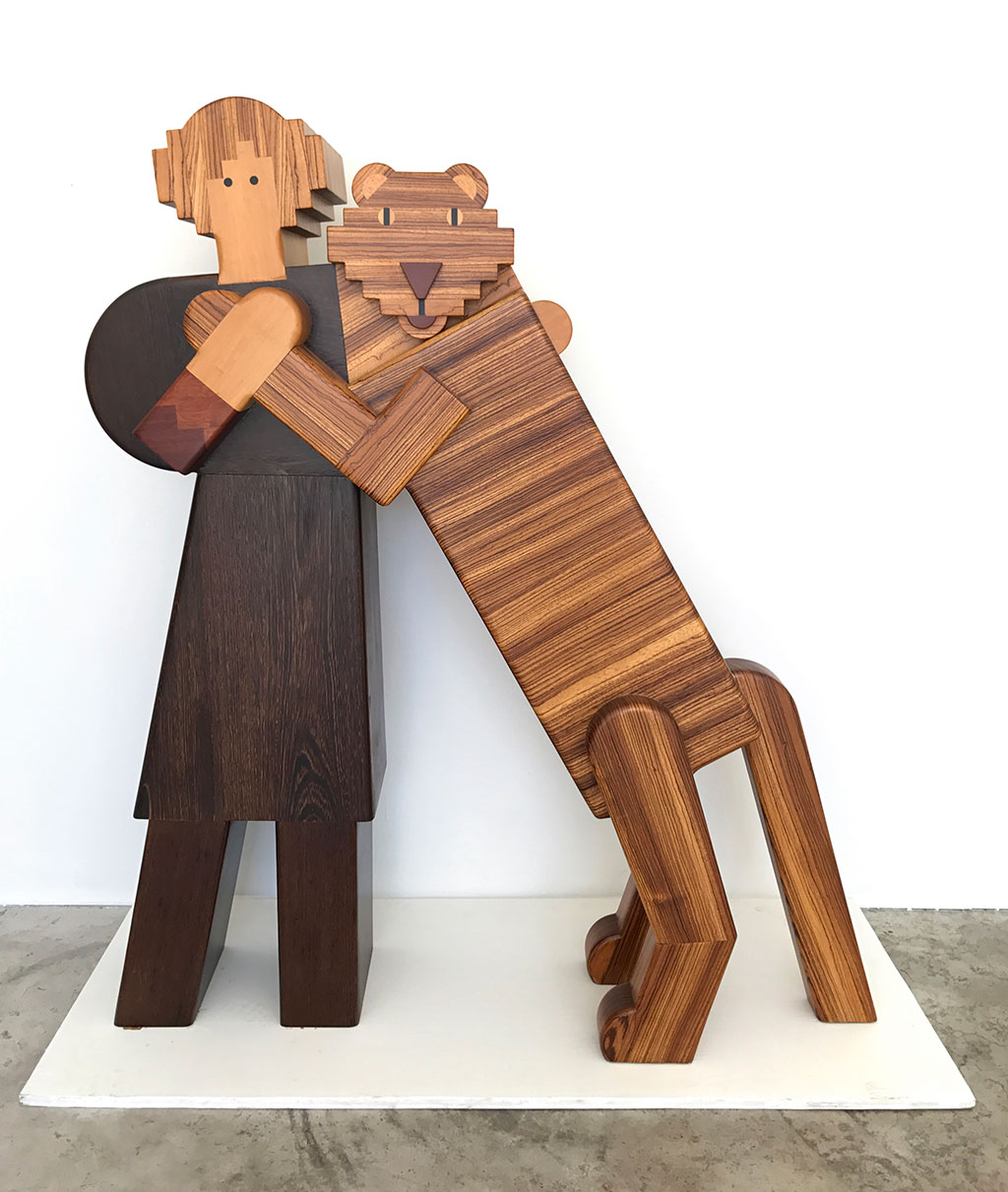
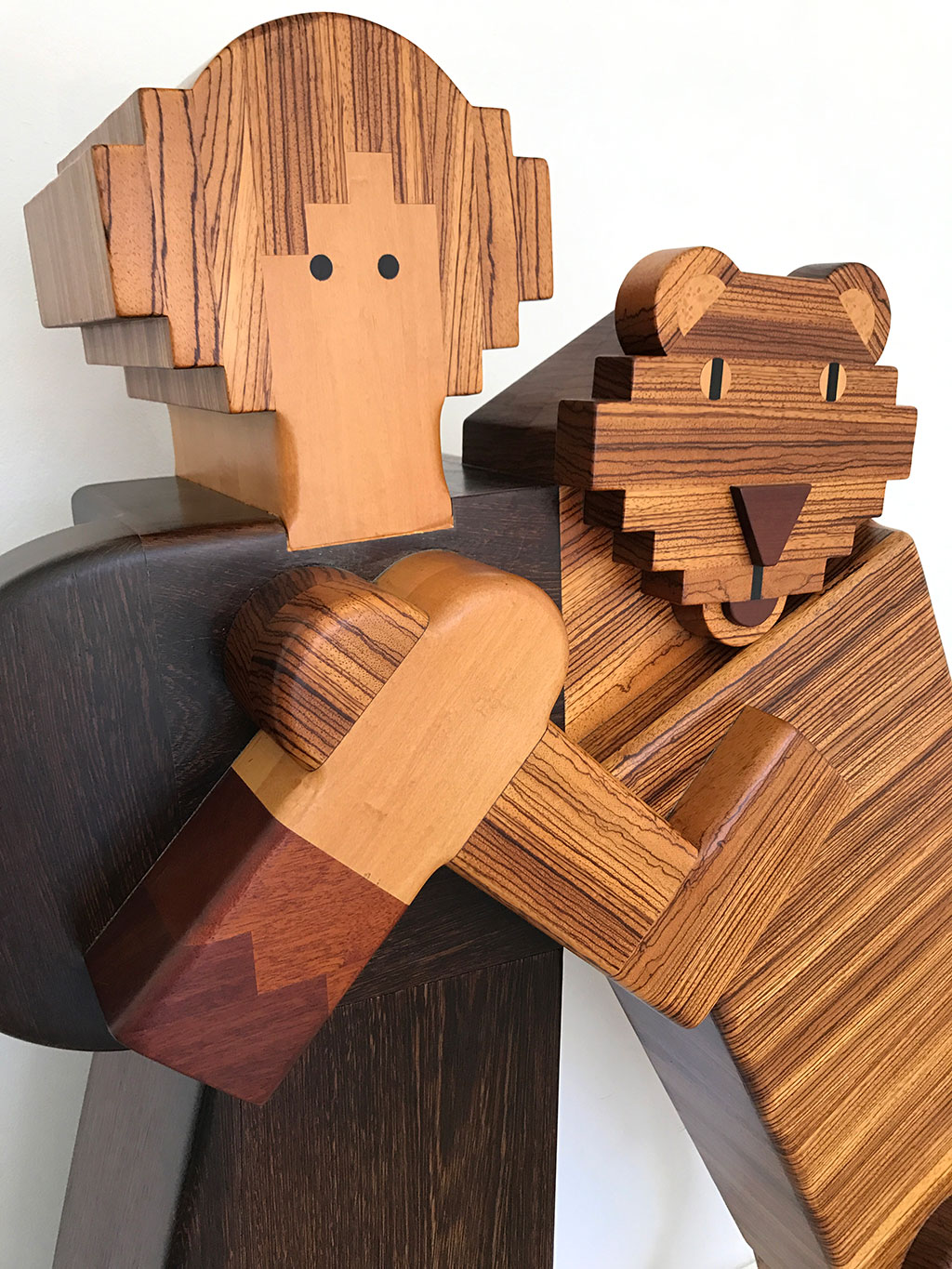
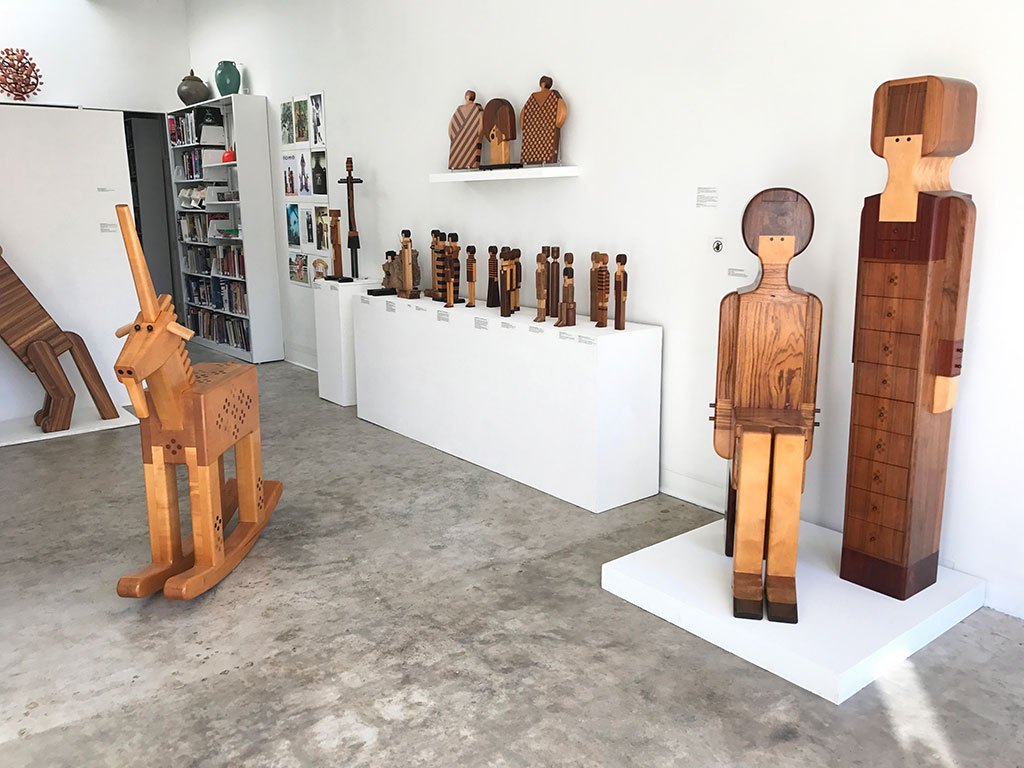
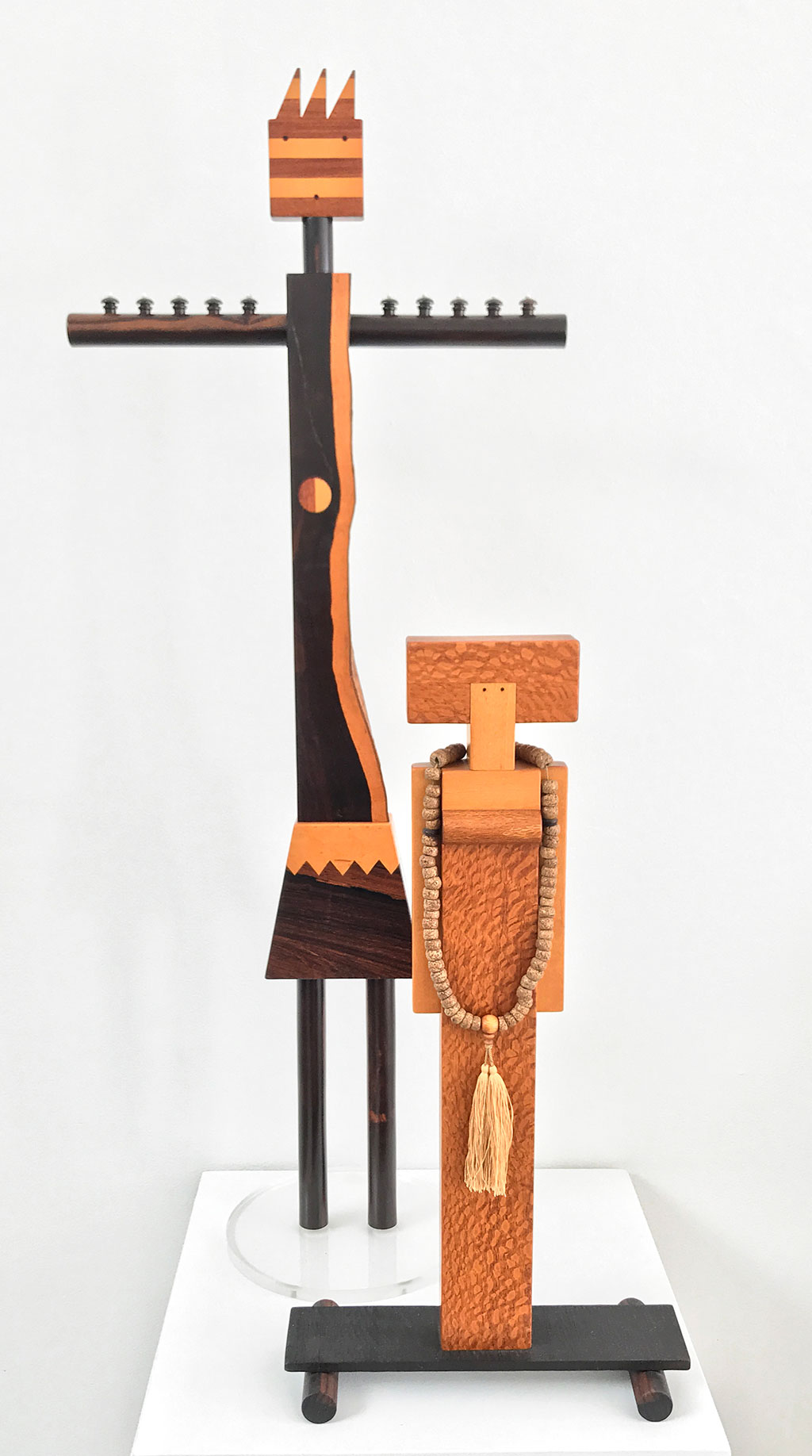
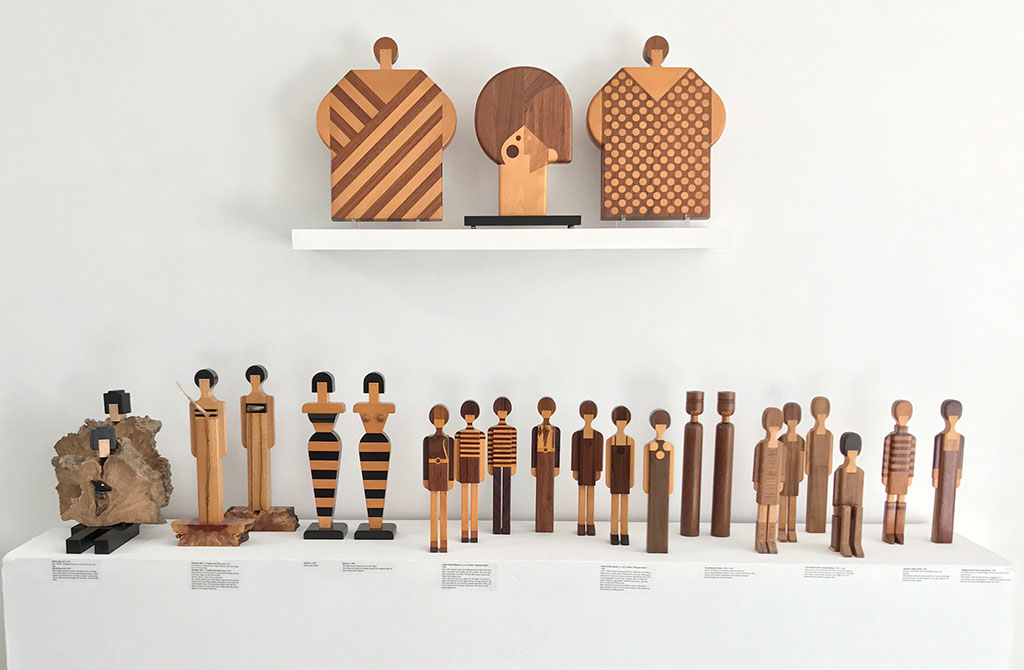
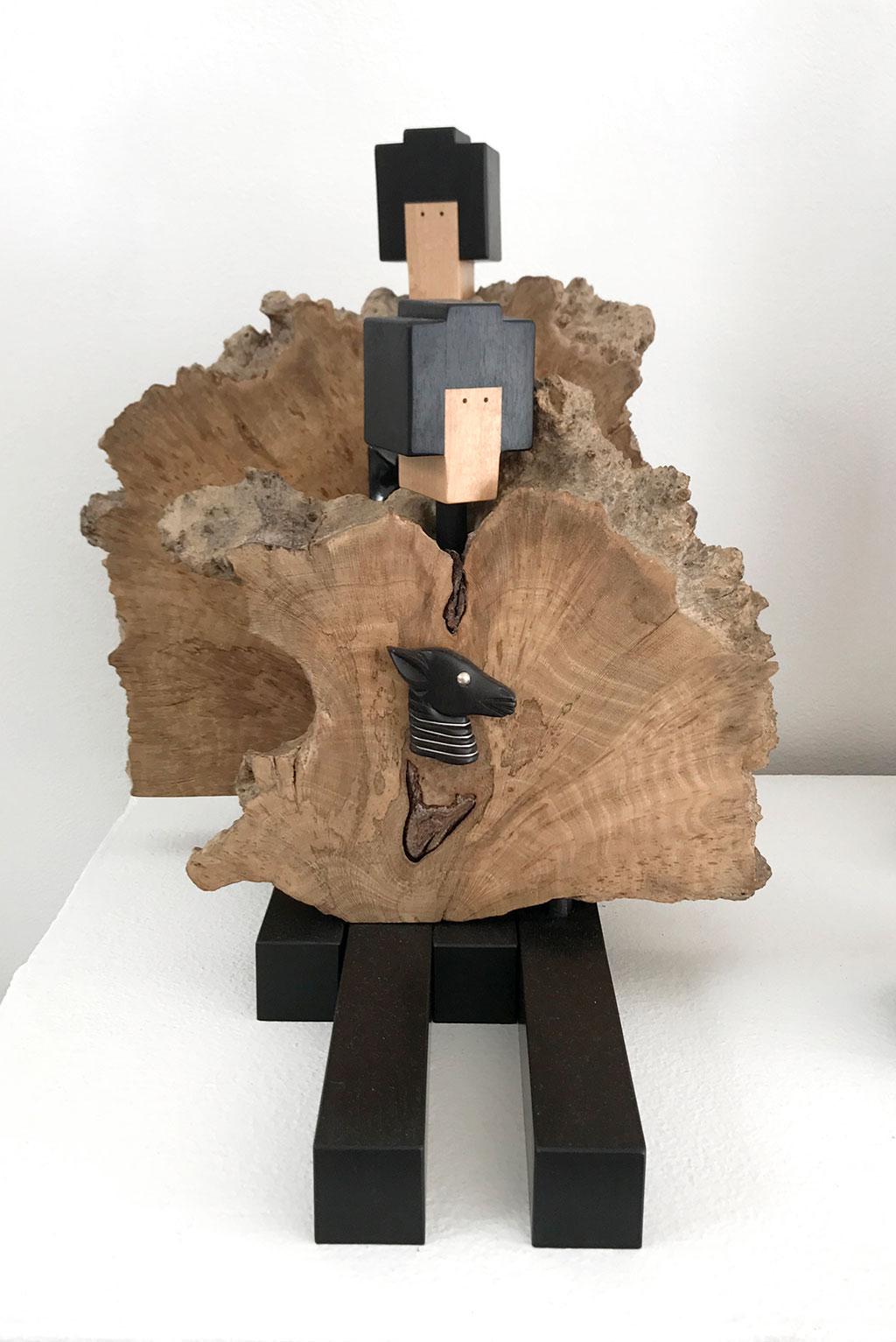
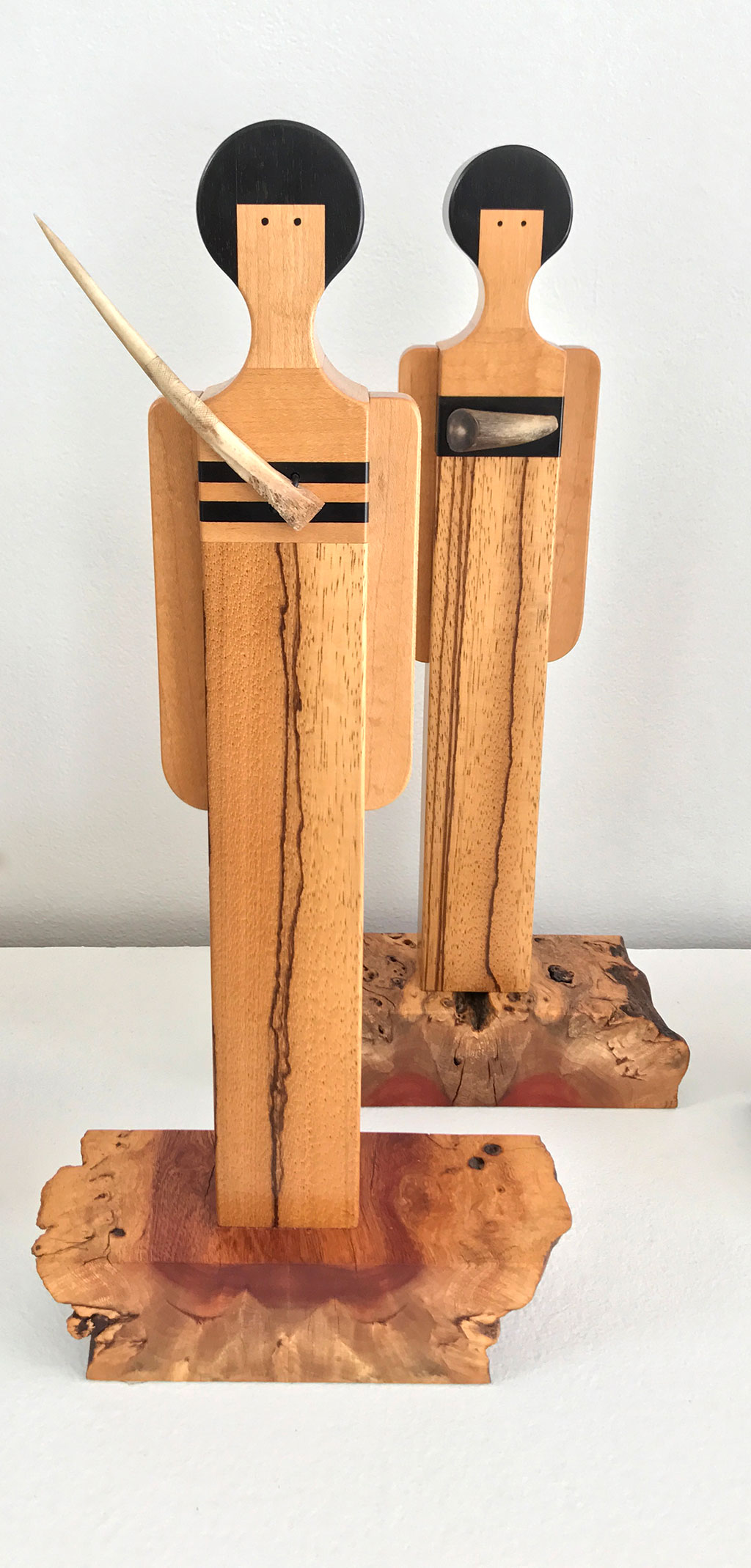

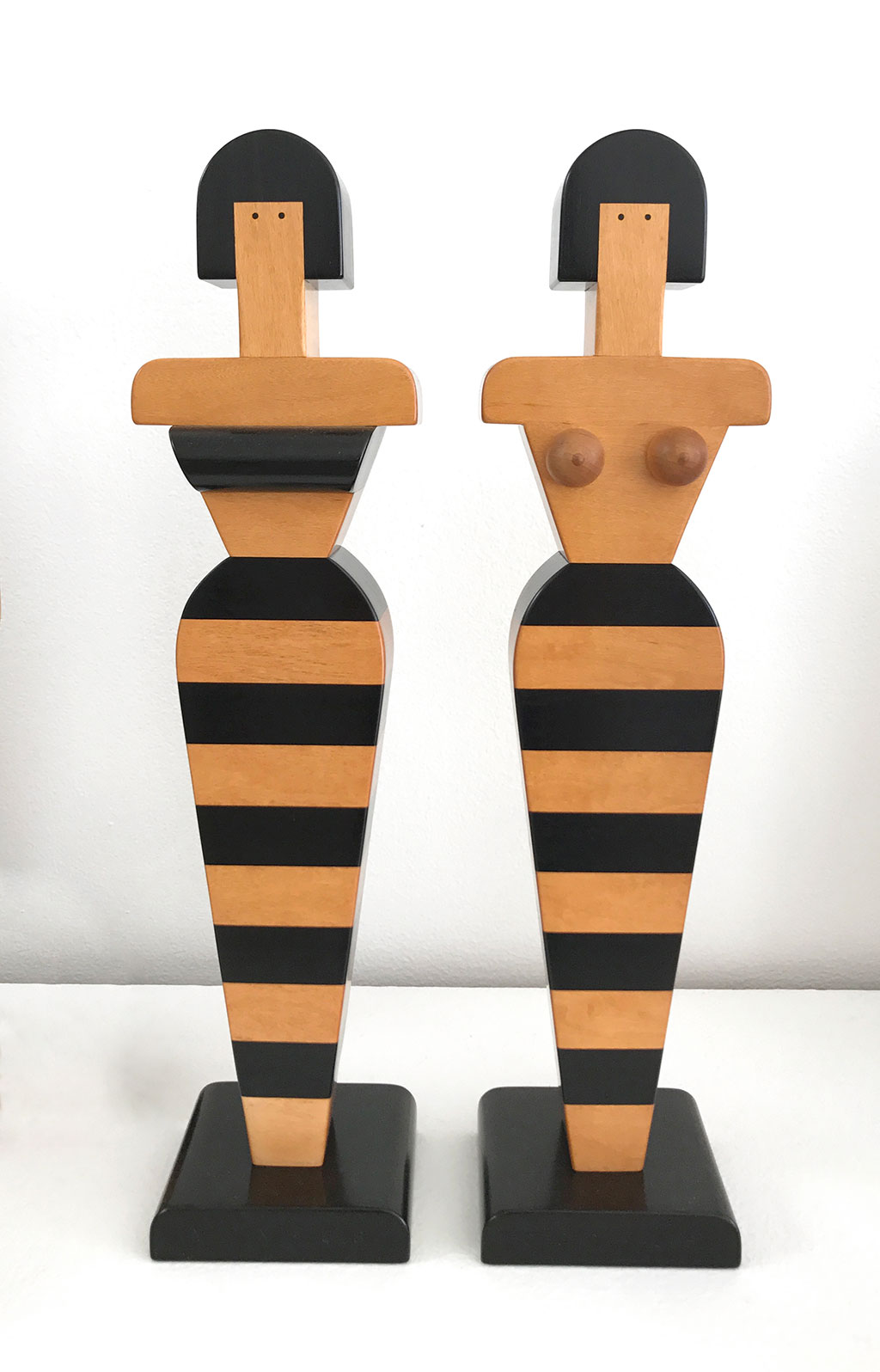

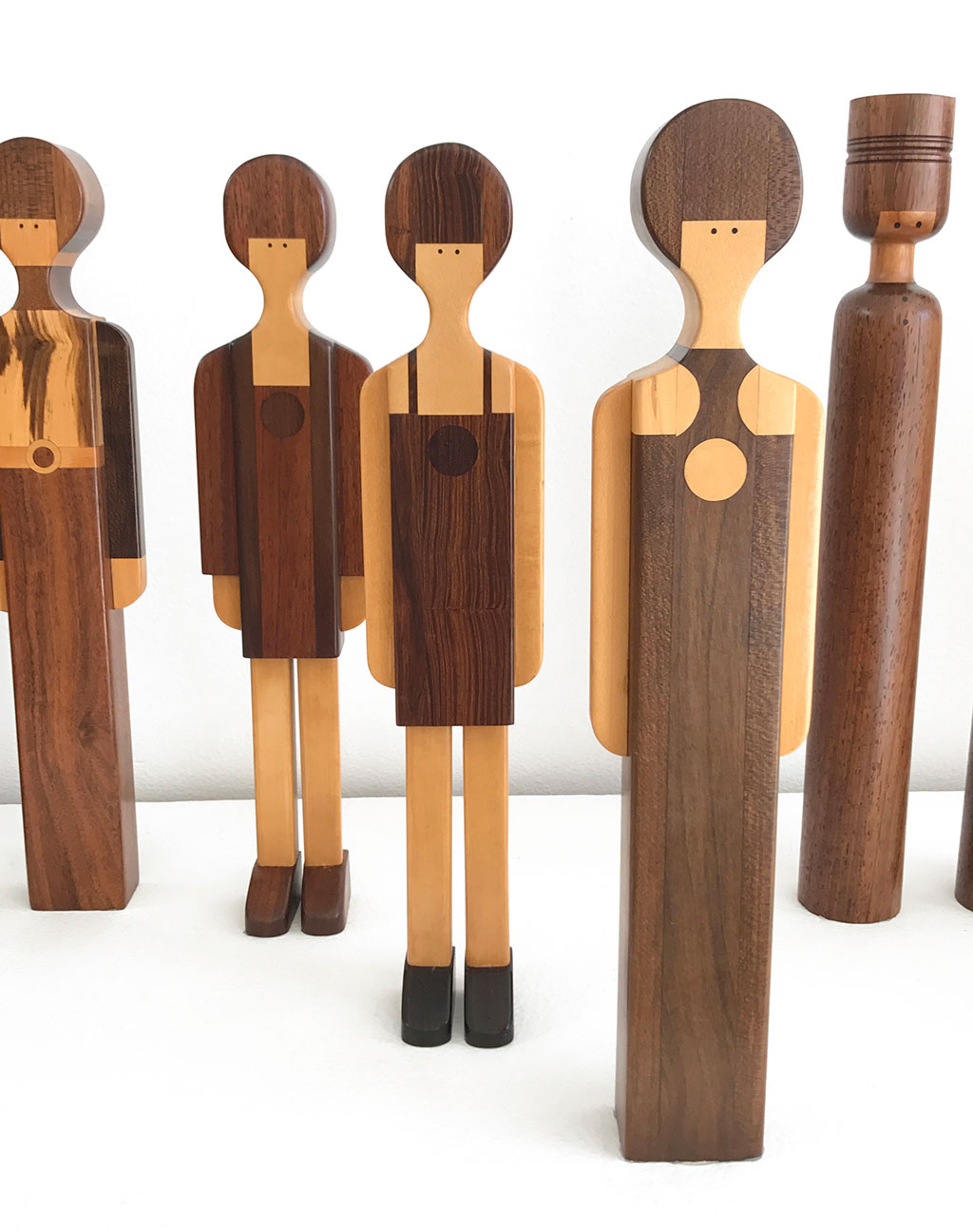
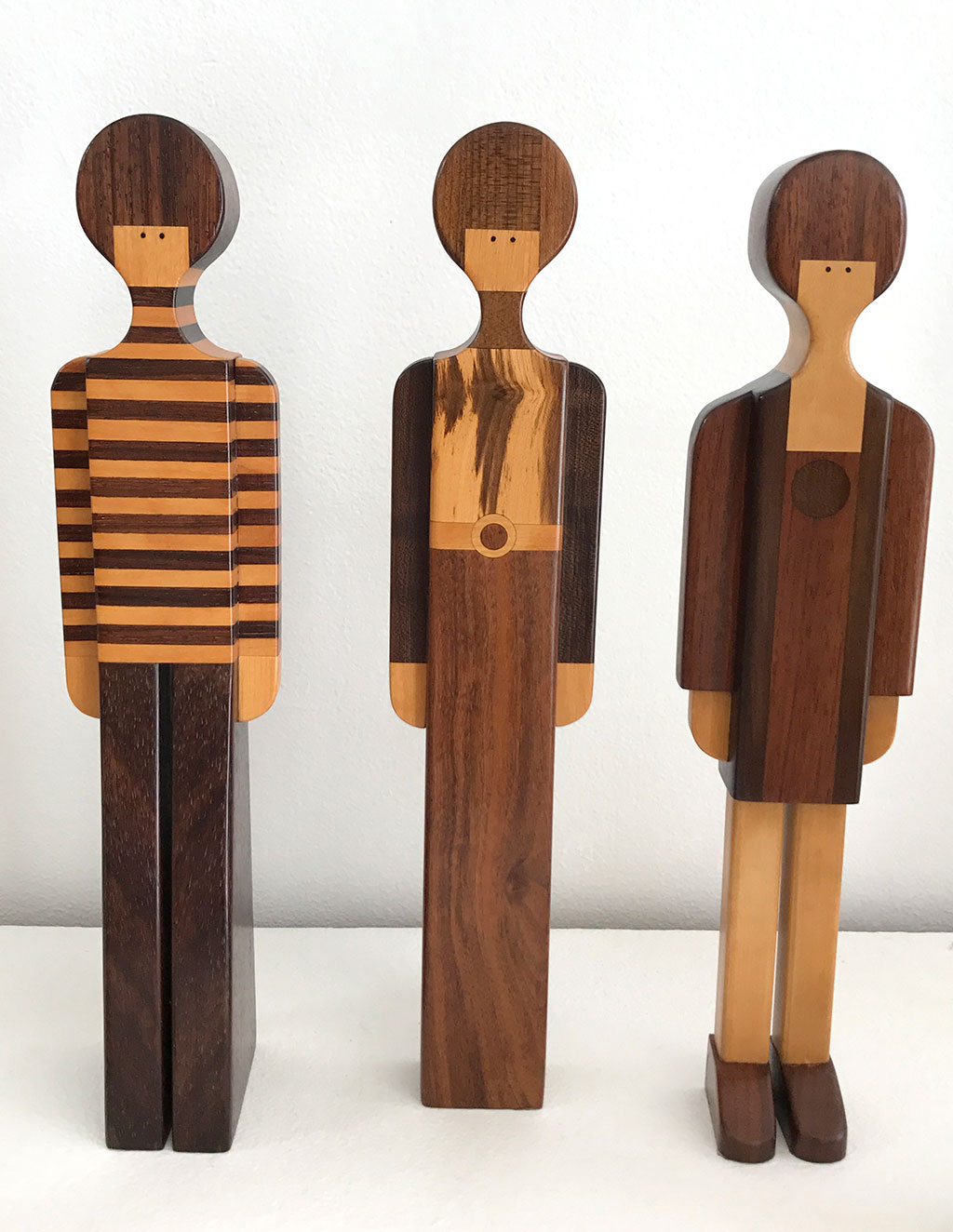
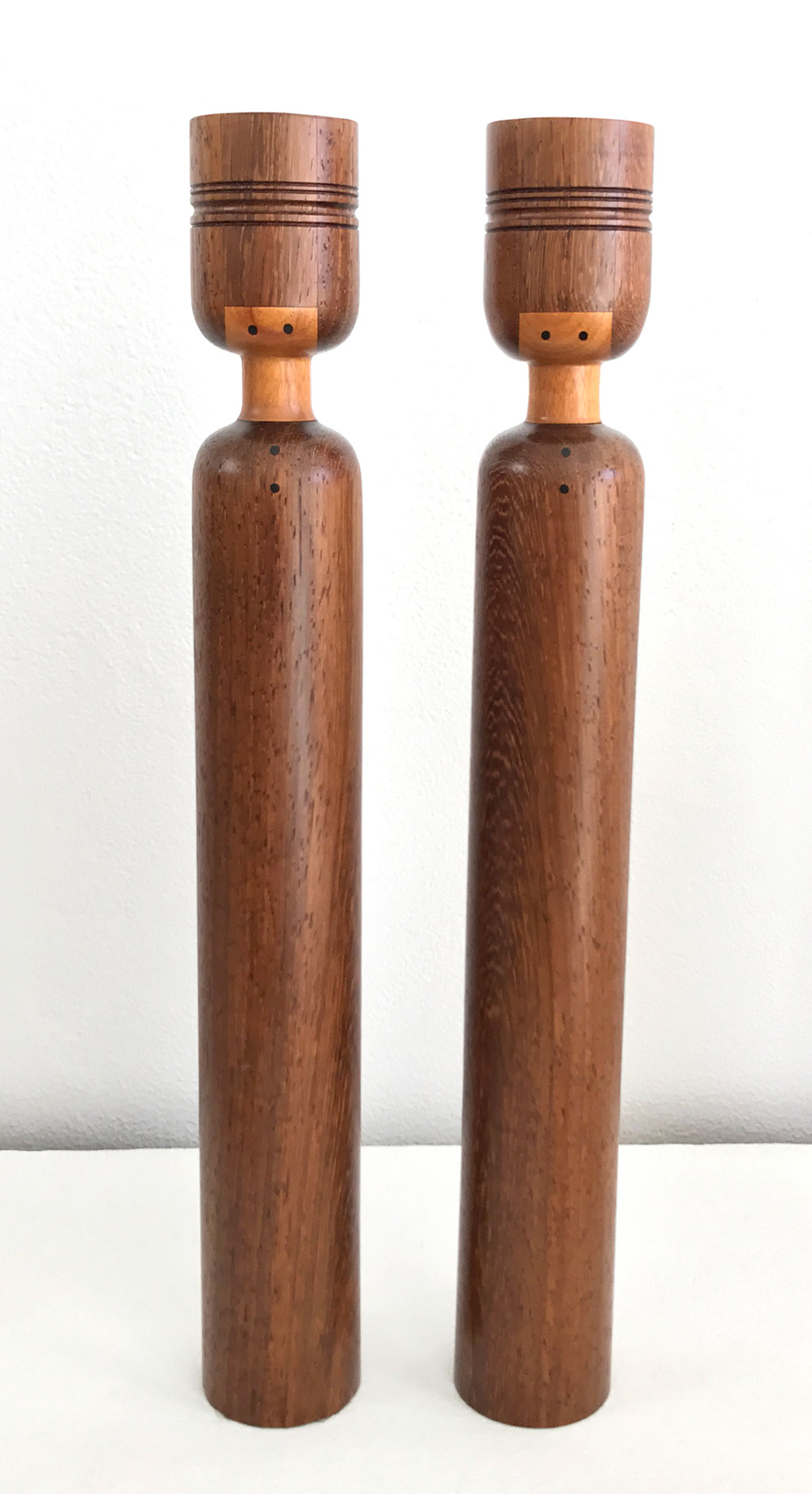
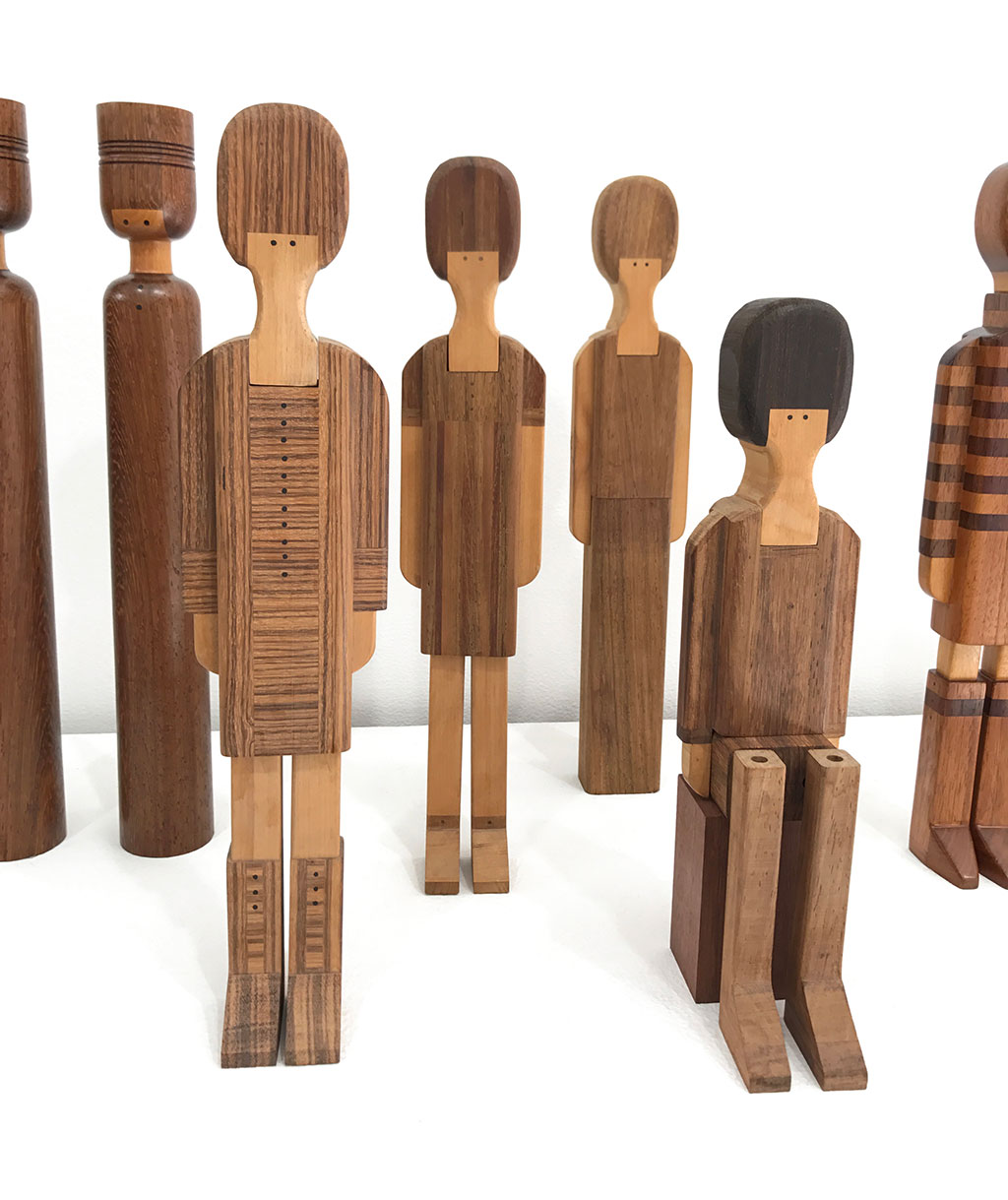
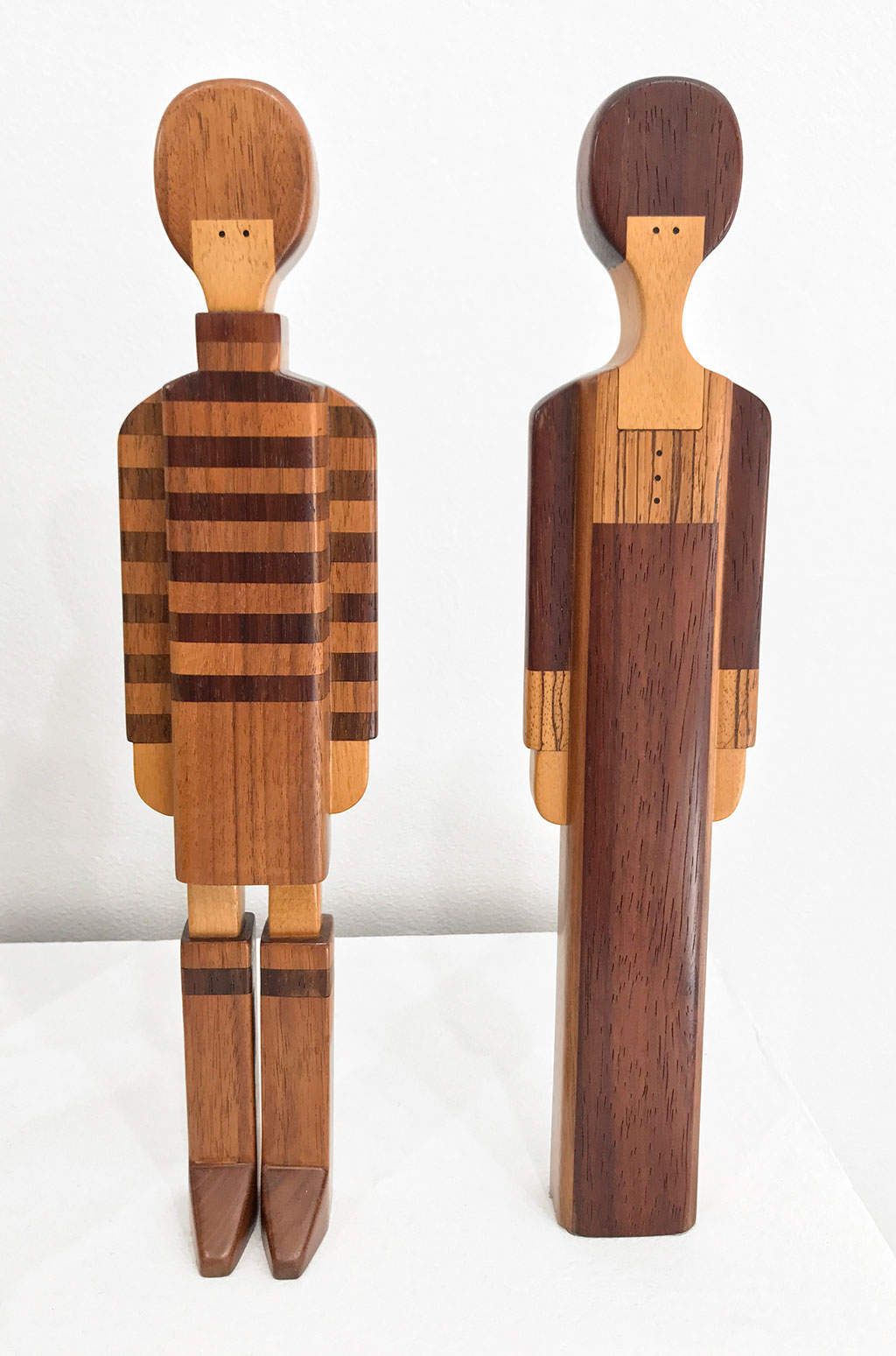

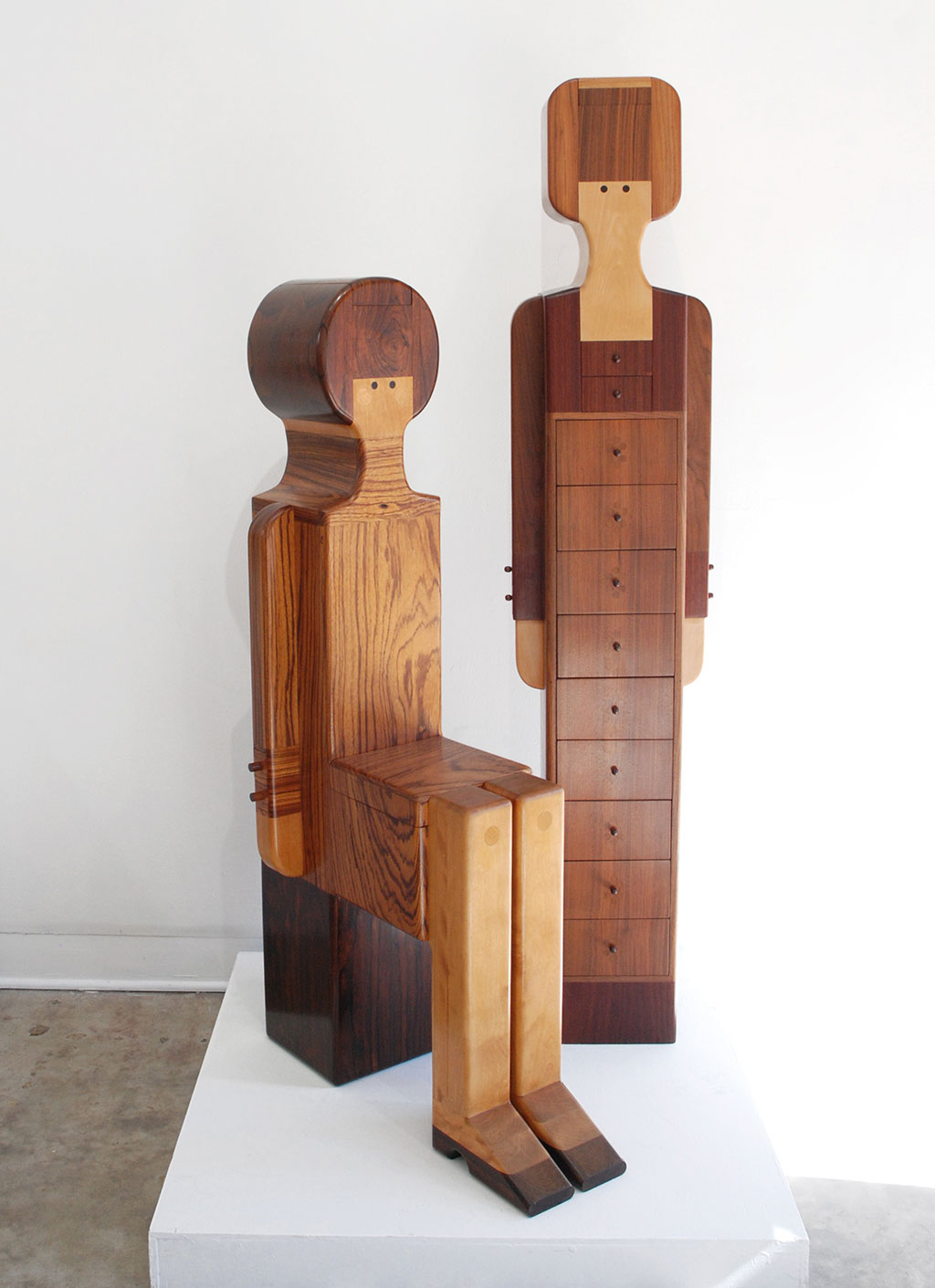
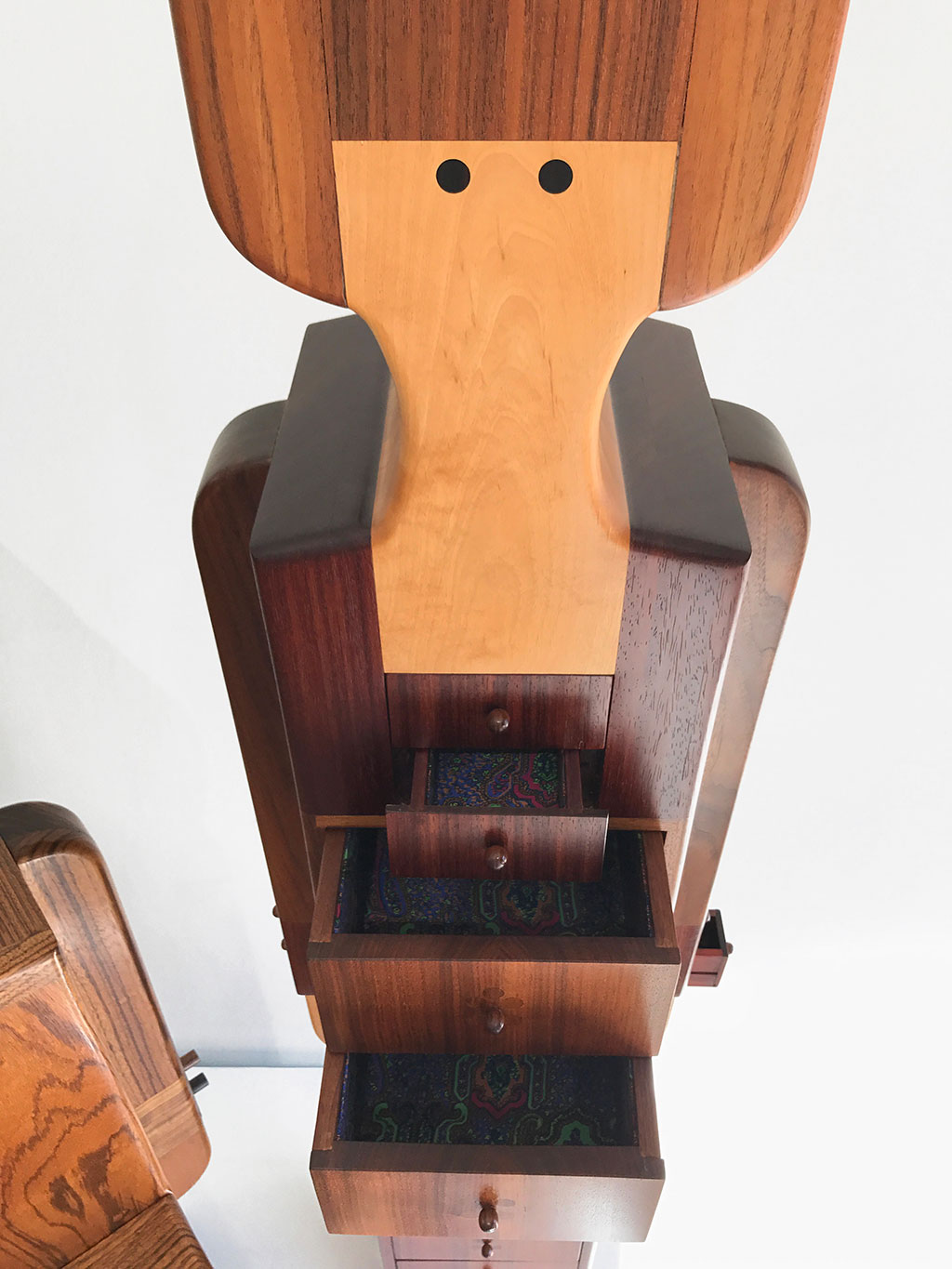
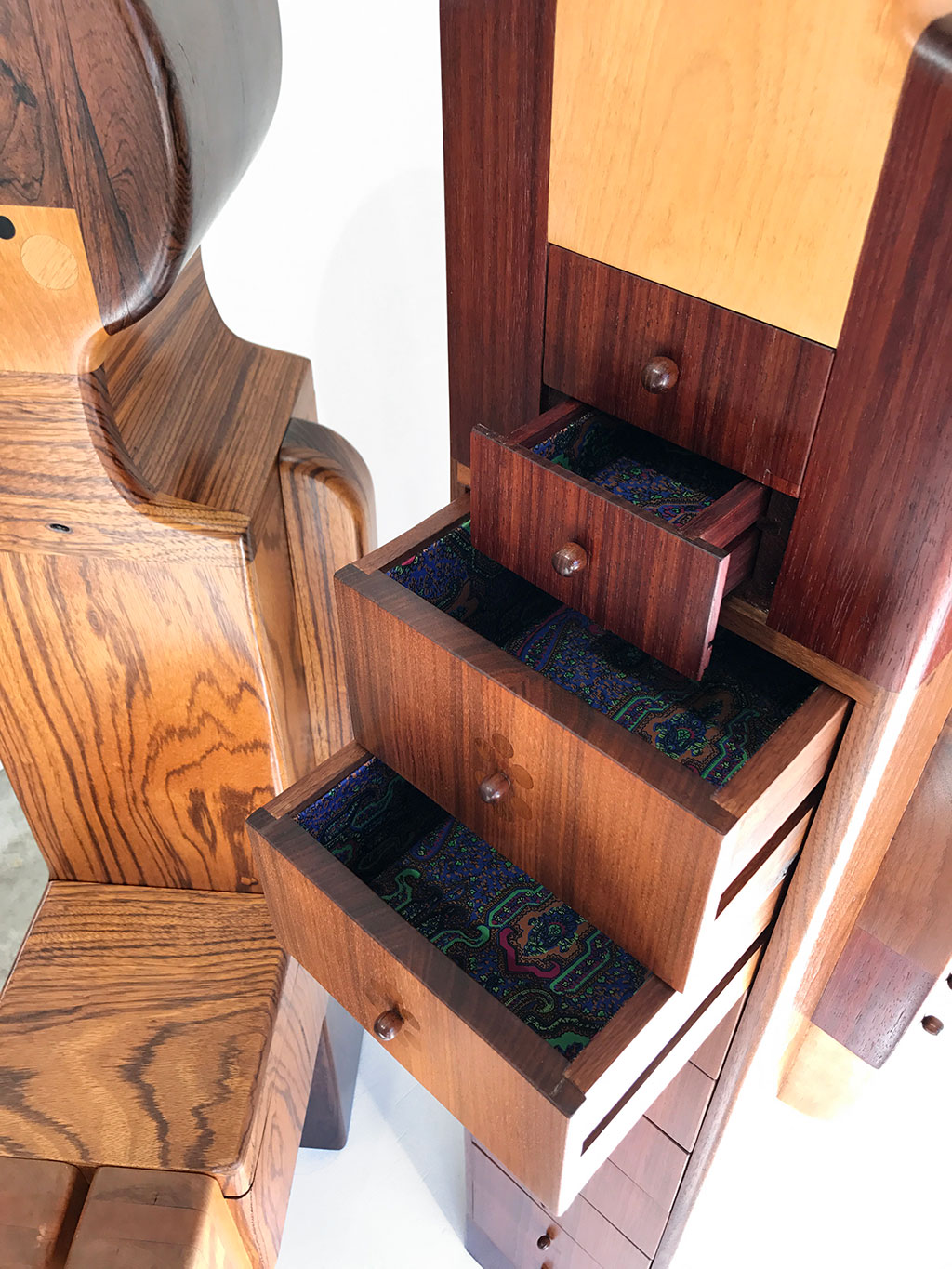
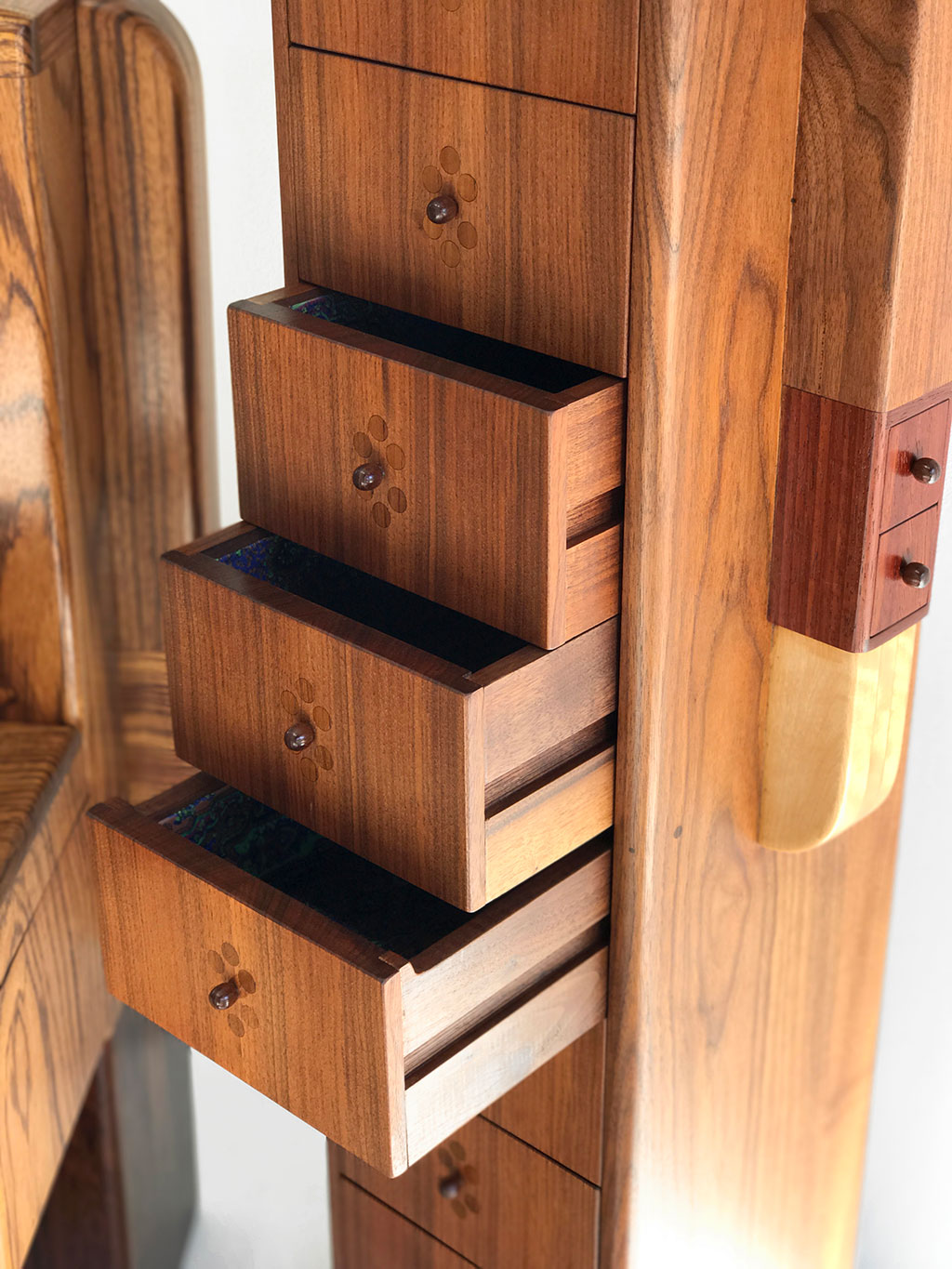
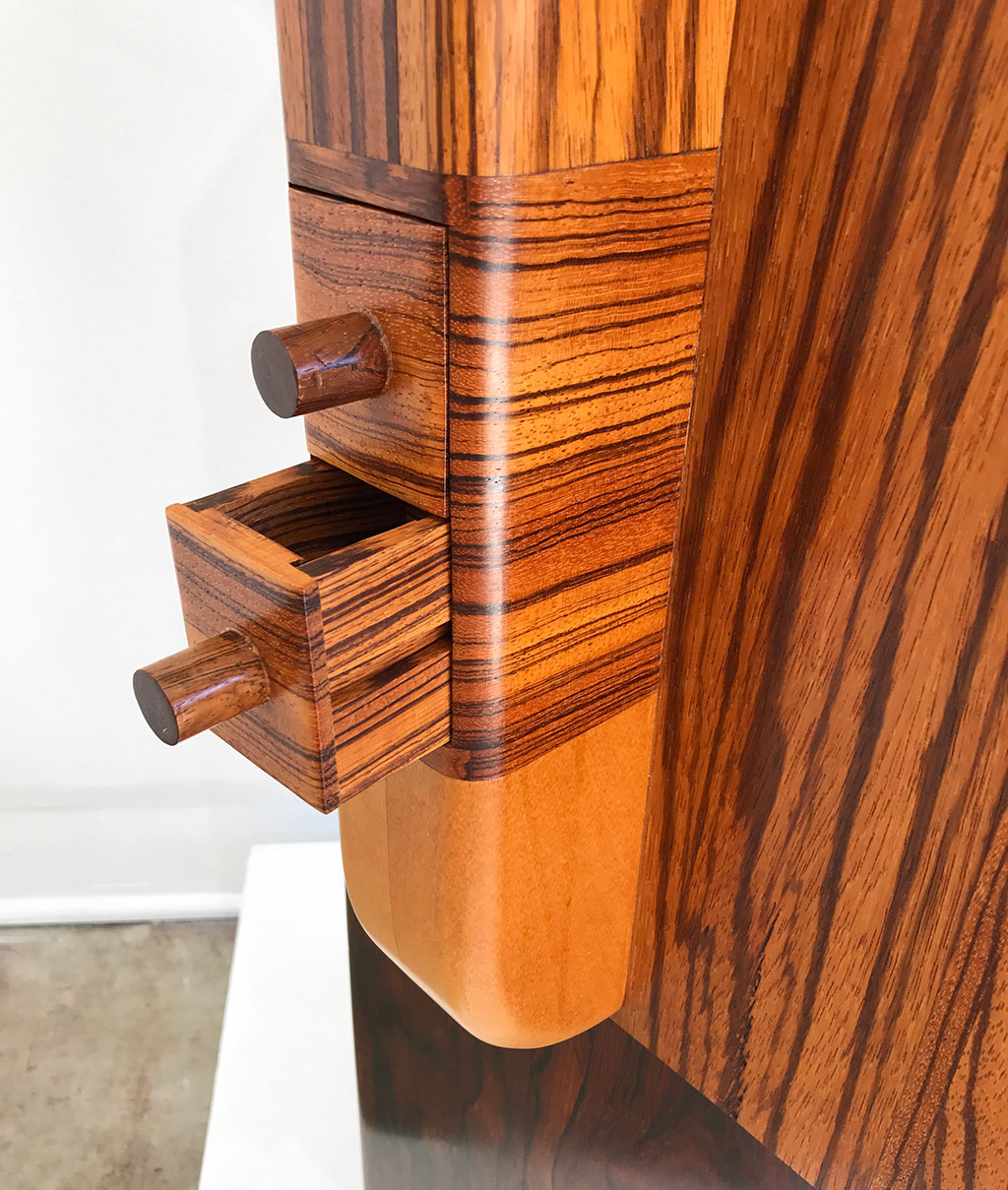
Photos by Madison Metro
